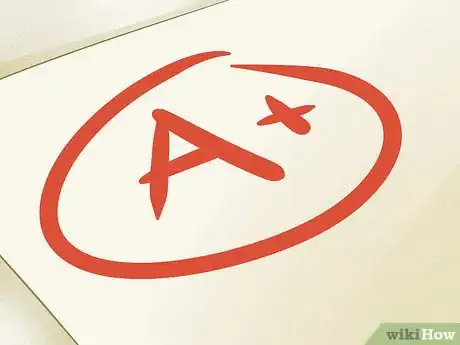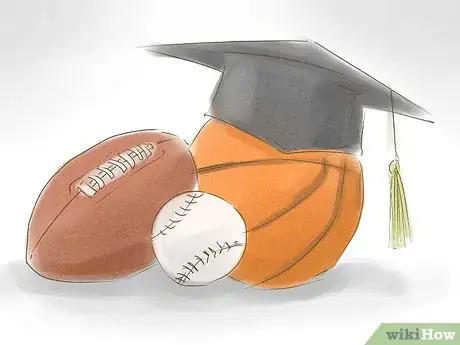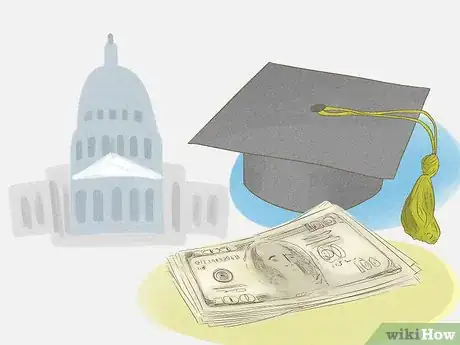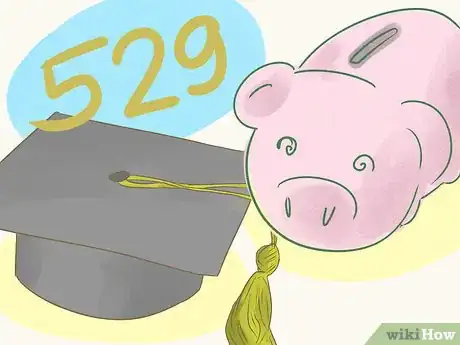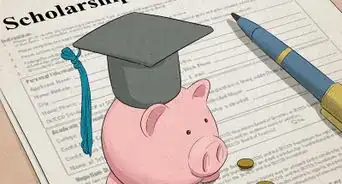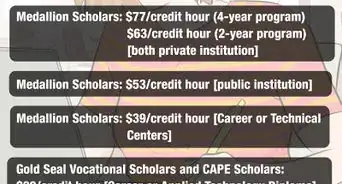This article was co-authored by Jennifer Kaifesh. Jennifer Kaifesh is the Founder of Great Expectations College Prep, a tutoring and counseling service based in Southern California. Jennifer has over 15 years of experience managing and facilitating academic tutoring and standardized test prep as it relates to the college application process. She takes a personal approach to her tutoring, and focuses on working with students to find their specific mix of pursuits that they both enjoy and excel at. She is a graduate of Northwestern University.
There are 9 references cited in this article, which can be found at the bottom of the page.
wikiHow marks an article as reader-approved once it receives enough positive feedback. This article has 16 testimonials from our readers, earning it our reader-approved status.
This article has been viewed 431,390 times.
Getting into college is tough enough. Then you've got to figure out how to pay for it. If you want to secure assistance from a university or a private institution in the form of scholarships, you can learn to negotiate the process and give yourself the best chance for getting big money. While "full rides" are rare, most state schools offer a number of them to qualified students, and you can learn to patch together different foundation options to help you pay for school. See Step 1 for more information.
Steps
Applying for University Scholarships
-
1Apply to your top schools in state first. There are two major ways to get a big scholarship to attend school as an undergraduate: winning a scholarship from the school itself, or winning a private or federal scholarship that can be used at any school.[1] Both varieties of scholarship are typically given for a combination of demonstrable financial need and excellence in achievement. To start narrowing it down, think about nearby schools that will value in-state applicants.
- Typically, but not in all cases, state schools offer more full scholarships to in-state applicants with fewer criteria that need checked off to apply. In other words, the only criteria to apply needs to be that you're a resident of the state in which you're applying, in many cases. Because the rent covered by the full scholarship is a lesser amount, more of these scholarships are sometimes offered. Smaller, more expensive private schools out of state typically offer the fewest scholarship options.
- Getting a big scholarship will have more to do with how well the application board thinks you'll fit in with their mission for the university, meaning that you'll stand a better chance of big scholarships at schools where you think you'll fit in.
-
2Find out what financial aid options your top schools offer. The scholarship opportunities and financial aid packages that each school offers will vary based on a number of factors, including the school's endowment, the enrollment numbers in a given year, and their focus on attracting specific varieties of students. Each school will offer a limited number of scholarships to students based on merit and other factors.
- Typically, you can learn everything you'll need to know on the website of the university to which you're applying by clicking on "Financial Aid" and selecting "Scholarships." Most schools will separate the scholarships available to in-state, out-of-state, and international students, so you can find the scholarships available to you.
Advertisement -
3Fill out the financial aid application at each school. To apply for scholarships at a university, you don't need to apply for individual scholarships separately, but you do need to mark on your financial aid application that you'd like to be considered. The Free Application for Federal Student Aid (FAFSA) is the universal template for applying for aid in the United States, and it's typically due around the same time as the general admission application, and will come with a variety of other supplementary materials to determine what financial aid to offer you. This includes loans, scholarships, and grants, including the Pell Grant.[2]
- To start the process, you'll usually need to register on the FAFSA website and receive a PIN number to get started entering your information. You can access FAFSA here.
- After starting an account, you'll need to fill out your financial information regarding income, savings, investments, and other holdings, or provide this basic information about your parents if you're applying to college as a dependent. The application process will help you determine whether or not you're a dependent.
-
4Demonstrate financial need. Full scholarships are primarily offered to in-state applicants who wouldn't be able to pay for college otherwise, with some being offered to exceptional students and athletes variously, depending on the institution. On your FAFSA application, then, it's important that you demonstrate a lack of the essential funds and holdings that would make you able to pay for your education otherwise, and for your application to be as strong as possible in demonstrating your potential to succeed at the school you choose.
- For most students, applying for FAFSA as a dependent means that you won't qualify for any full scholarships offered by the university that are offered on a need basis. If you're up in the air about how to apply, it might be smarter to apply as an emancipated or an independent student.
-
5Cast a wide net. You should be applying to a variety of schools, the financial aid packages at each, and looking for private and federal ways to pay for your schooling on top of university scholarships. For the most part, paying for college is like a patchwork, you'll be accounting for it from a variety of different places, meaning that you'll want to give yourself the most possible options.
Applying for Grants and Scholarships
-
1Apply to be a Gates Millennium Scholar, if you are a member of a racial minority. Established by Bill and Melinda Gates, this scholarship offers a certain number of students of African-American, Asian and Pacific Islander-American, Hispanic-American, and American Indian descent full scholarships to the school of their choice. To apply, you must be recommended by a teacher and fill out an application here. You'll need to do this after having applied to and been accepted to a school, as well as applying for the FAFSA.
- Ron Brown Scholars are available specifically to students of African-American decent, between 10 and 20 each application year. This foundation provides $10,000 scholarships on a renewable basis, meaning that the total scholarship can be worth up to $40,000 dollars over the course of a four-year degree.
-
2Apply for a Davidson scholarship by demonstrating your excellence in a field. By completing a project in science, technology, mathematics, music, literature, philosophy, or a miscellaneous category called "Outside the Box," students under the age of 18 can qualify for a scholarship anywhere between $10,000 as a Davidson Fellow and $50,000 dollars as a Davidson Fellow Laureate for use at the school of their choice. You can apply here.
-
3Apply for science scholarships.The Intel Science Talent Search is a science and technology competition to which you can apply for your same research materials. To apply, you'll need to answer some essay questions, provide a recommendation from a teacher, as well as a transcript.[3] Then you'll fill out the application online and upload your research reports and other materials.
- Many of the same students are finalists for both of these competitions, making them an excellent resource for students with an excellent mind for research and an interest in science.
-
4Take the pre-SAT to qualify for National Merit Scholarships. This is the easiest scholarship to apply for outside of the university. By signing up for and scoring highly on the pre-SAT, you'll automatically be considered for a National Merit Scholarship, which are awarded to students who demonstrate excellence.
Standing Out on the Application
-
1Maintain an exceptionally high grade-point average. To qualify for a full scholarship, whether you're applying for money from private foundations or applying to university scholarships, you need to demonstrate your excellence first by maintaining good grades. Most scholarships have a cut-off somewhere around 3.3 or 3.5 GPA, but you'll probably need more like a 4.0 to really stand out. Focus on keeping your grades very high.
-
2Get involved in lots of extracurricular activities. When considering scholarship applicants, boards are looking specifically for well-rounded students with dynamic presences and personalities. In addition to academics, joining an extracurricular organization can help to demonstrate that you're a serious and dedicated student.
- Formal organizations such as Future Business Leaders of America (FBLA) or Future Farmers of America (FFA) will demonstrate your commitment to a particular field, while also offering networking privileges and insider info on securing scholarships and applying.
- Take small steps by joining clubs and school organizations early on in your high school career and becoming a president or officer by the end of your time in high school. Being a part of athletics, bands, and other types of extracurricular activities can be an excellent way of standing out.
-
3Write an excellent personal statement. Well before your scholarship applications and college applications are due, you should start crafting a personal statement that you can use to apply for colleges, and tailor to specific scholarships as needed. The personal statement should introduce you to the organization by articulating your interests, your goals, and your personality. Many people use the personal statement to describe an obstacle overcome or a challenge met.
- Don't use your personal statement to list things that can be easily found on your resume. Instead, use the personal statement to highlight your goals and your personal connection to those achievements and events. Where do you want to go from here? The personal statement should address that question primarily.
- Revise your personal statement every time you submit it. You shouldn't use a single blanket statement that you send everywhere, instead choosing to do a little bit of digging and make your personal statement specific to the institution to which you're applying. How does your mission fit in with this school? With this scholarship organization?
- Personal statements aren't the best time to start experimenting with form. You don't need to write an experimental meta-short-story full of $20 vocab words to try to trick the admissions board into thinking they've got a genius on their hands. Write with concision. Use the thesaurus sparingly.
-
4Highlight your disadvantages. So you didn't go to a prestigious prep school. So you didn't enjoy reading in school when you were younger. So your parents haven't been to college. These aren't things to hide on your application, these are things to highlight. Scholarships are most often awarded to students who've faced an uphill battle, not students who've been handed a silver spoon. Don't worry about whether or not your application will look prestigious, make it true to you and your experience.
Finding Alternatives
-
1Join ROTC. ROTC stands for Reserved Officers' Training Corps. The Navy, Air Force, and the Army all have programs in place at a variety of universities to train commissioned officers who will serve actively following graduation, in exchange for money toward college. Full and partial scholarships are available through ROTC programs. To join, sign up for the ROTC Basic Course in school, or you can take it before school starts in the summer. Your success in this course will qualify you for ROTC. [4]
- In some high schools, you can join Junior ROTC to help prepare you and give you a better chance of being accepted into the program. Research the options available at your school if you think this option might be right for you.
- The Coast Guard offers a similar training program called CSPI. Offered at fewer schools (primarily coastal universities), this can be another good option for qualified candidates.[5]
-
2Secure an athletic scholarship. If you're a very talented athlete, lots of teams offer free tuition in exchange for committing your talents to the team. If you're a talented athlete, get in touch with the coaches at schools you're interested in and see if you can get in for a workout or a tryout to get a sense of your chances.[6]
- Many different schools and sports offer scholarships to players, starting in the junior and senior year of high school. You may start getting interest from schools who'll be in touch and scouting you as a potential player. If you haven't been in touch with any interested schools by the time of your senior year, though, you probably need to make other plans.
- It's important to understand that most full-ride scholarships are reserved for sports that bring lots of revenue into the school, mostly men's football and basketball. Other sports do offer scholarships, some substantial, but many fewer full scholarships. If you're a softball player, for example, going to school for free may be difficult.
-
3Computer-science students should consider the Microsoft University. If you're already a college student studying computer-science, Microsoft University offers free tuition to students looking to transfer and get trained in a slightly different, more innovative way. This can be an excellent but competitive way of getting trained, and all but guarantees you a high-paying job on the other side of your degree.[7]
-
4Exhaust your federal loan options. If scholarship opportunities don't pan out, you'll need to pay for as much of tuition as you can by exhausting your federal loan options. These offer competitive interest rates, compared to private loans, and are easy to defer until after college. It's in your incentive to pay them off quickly to avoid accruing extra interest, but it's also easy to win deferments in the short term while you complete your degree and post-graduate degrees and seek gainful employment.
-
5Consider taking out private loans. Federal loans often won't cover the whole package, which can put some student families in a tight spot, making private loans a necessary supplement. Fortunately, you can often work to consolidate these loans after college, and defer the payments until you're finished with school. If you've got no way to pay for school otherwise, these are reliable and readily available options for students in need.
- You may have to get your parents to help cosign for these loans, unless you have a credit history that's significant, depending on the lending institution. Sallie Mae, in particular, caters to students, helping to take out loans to help pay for college.
-
6Consider a 529 savings plan to invest money for college. Much like a 401k, a 529 savings plan allows you to invest a certain amount of money with a financial advisor, attempting to make school money with mutual funds. Each state handles 529 plans differently, but nearly every state has a plan in place to allow students to save tax-free money for college.[8]
-
7Work for it. Work study programs are available that allow you to work on campus in some capacity, in exchange for a break on tuition, or pay that you can then put toward tuition. Work-study will be a part of financial aid that you'll qualify for if you can demonstrate need, but you'll still need to find campus jobs and apply for them to get this variety of aid.
- If you don't qualify for financial aid, get an off-campus job to make money and put it toward your tuition payments, as much as possible on top of loans.
-
8Keep looking until the last minute. Don't stop looking for scholarship opportunities and seeking out different options when you get in campus. Most students will have already enrolled and started classes before becoming aware of different university-specific funding options and scholarships available. Talk to a financial advisor in the registrar's office at your school to stay updated on new scholarships and options for paying for school. Don't give up.[9]
Expert Q&A
Did you know you can get expert answers for this article?
Unlock expert answers by supporting wikiHow
-
QuestionHow do I apply for scholarships online?
 Jennifer KaifeshJennifer Kaifesh is the Founder of Great Expectations College Prep, a tutoring and counseling service based in Southern California. Jennifer has over 15 years of experience managing and facilitating academic tutoring and standardized test prep as it relates to the college application process. She takes a personal approach to her tutoring, and focuses on working with students to find their specific mix of pursuits that they both enjoy and excel at. She is a graduate of Northwestern University.
Jennifer KaifeshJennifer Kaifesh is the Founder of Great Expectations College Prep, a tutoring and counseling service based in Southern California. Jennifer has over 15 years of experience managing and facilitating academic tutoring and standardized test prep as it relates to the college application process. She takes a personal approach to her tutoring, and focuses on working with students to find their specific mix of pursuits that they both enjoy and excel at. She is a graduate of Northwestern University.
Founder, Great Expectations College Prep
-
QuestionWill extracurricular activities help me get a scholarship?
 Community AnswerYes. Doing after school sports, clubs, and activities, as well as volunteering in your community, will help you appear as a more well-rounded student to colleges, helping you get in and possibly receive a scholarship.
Community AnswerYes. Doing after school sports, clubs, and activities, as well as volunteering in your community, will help you appear as a more well-rounded student to colleges, helping you get in and possibly receive a scholarship. -
QuestionWhen should I start saving money for college?
 Community AnswerYou can start at anytime, preferably sooner rather than later. Most people start saving in high school, but you can start even earlier if you want.
Community AnswerYou can start at anytime, preferably sooner rather than later. Most people start saving in high school, but you can start even earlier if you want.
References
- ↑ Jennifer Kaifesh. Academic Tutor. Expert Interview. 8 November 2019.
- ↑ http://www.ed.gov/programs/fpg/index.html
- ↑ https://student.societyforscience.org/apply-intel-science-talent-search?pid=262
- ↑ http://www.goarmy.com/rotc/college-students.html
- ↑ http://www.gocoastguard.com/active-duty-careers/officer-opportunities/programs/college-student-pre-commissioning-initiative
- ↑ http://www.usnews.com/education/blogs/the-scholarship-coach/2011/03/03/4-tips-before-you-pursue-athletic-scholarships
- ↑ http://www.fastweb.com/back-to-school-2012/articles/2925-9-places-to-look-for-full-ride-scholarships
- ↑ http://www.savingforcollege.com/intro_to_529s/what-is-a-529-plan.php#.
- ↑ http://www.usnews.com/education/best-colleges/articles/2011/07/07/4-overlooked-ways-to-pay-for-college?page=2
About This Article
To get a full ride scholarship, show universities you are a well-rounded and dedicated student by maintaining as close to a 4.0 GPA as you can, and by doing lots of extracurricular activities. Then, write a personal statement that shows your interests, goals, and personality, and tailor it for every institution you apply to. Don’t be afraid to highlight your disadvantages in that statement, since doing that will show them how hard you have worked to get where you are. Remember: you can always keep looking for new scholarships, even after starting classes. If you want to learn more, like what scholarships to apply for or how to apply for financial aid, keep reading the article!









